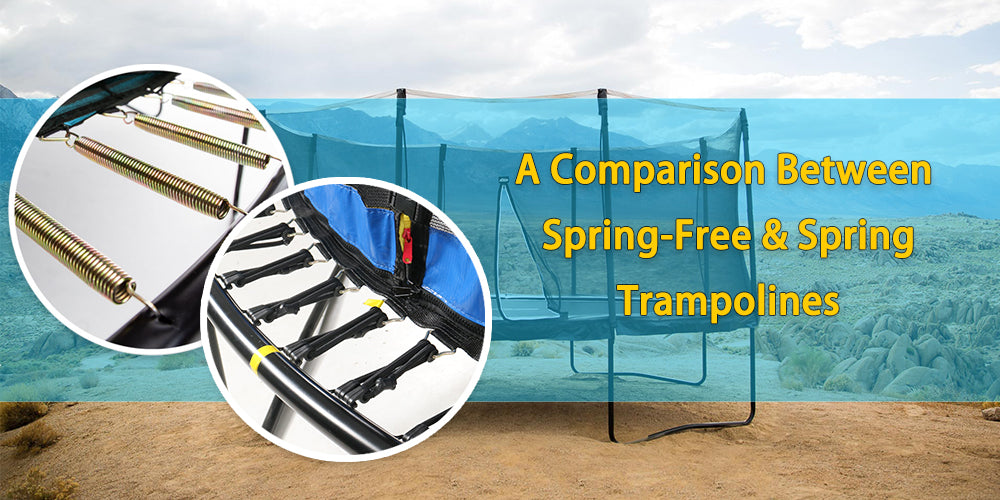
Trampolines have evolved over the years to cater to different user preferences, varied purposes, and diverse age groups. As a result, there's a wide array of trampoline shapes and sizes available in the market. In recent times, manufacturers have introduced a new type of trampoline - the spring-free trampoline.
What material makes the best trampoline?
We've compared two different materials used in trampolines - traditional spring-based and spring-free models - to assist you in making a more informed purchase decision!
1. Safety Features:
Spring-Free Trampolines: Without traditional metal springs, the risk of users getting caught or scratched by springs is eliminated. This design significantly reduces the possibility of injuries, making spring-free trampolines a safer choice, especially for families with children.
Spring-Based Trampolines: Traditional trampolines with metal springs may pose safety hazards, as users might inadvertently come into contact with or get caught by the springs while playing. And when choosing a spring trampoline, you need to choose one with more spring coils and thicker ones.

|
 |
2. Bouncing Experience:
Spring-Free Trampolines: The innovative design of spring-free trampolines, often using elastic bands or bungee cords, provides a quieter and less disruptive bouncing experience. This is particularly beneficial for those who wish to enjoy trampoline activities without generating excessive noise. Spring-free trampolines, with their elastic cords or rubber bands, offer softer bouncing suitable for various activities, including fitness, leisure bouncing, gymnastics, low-impact exercises, dance, and children's games.
Spring-Based Trampolines: The metal-on-metal interaction of springs in traditional trampolines can produce noticeable noise, potentially causing disturbances in the surrounding environment. The impact felt during bouncing is more intense, suitable for users seeking challenges and stimulation. The elastic spring system provides users with a more forceful feedback during bouncing.

3. Structural Stability:
Spring-Based Trampolines: Spring-based trampolines adopt a classic metal spring structure, providing a more stable framework capable of bearing greater weight and pressure.
Spring-Free Trampolines: The structural stability of spring-free trampolines is also high, but there might be greater limitations regarding weight-bearing capacity. When choosing a springless trampoline, it is best to choose a trampoline with two or more elastic cords in one bayonet.
4. Maintenance Requirements:
Spring-Free Trampolines: With fewer components prone to wear and tear, spring-free trampolines generally require less maintenance. The absence of metal springs reduces the need for frequent inspections and replacements.
Spring-Based Trampolines: Traditional trampolines may demand regular checks and replacements of metal springs to ensure optimal performance and safety. Over time, springs may lose their elasticity and become susceptible to damage.
5. Lifespan and Durability:
Spring-Free Trampolines: The materials used in spring-free trampolines (such as elastic cords or rubber bands) are typically durable and resistant to wear, contributing to an extended lifespan of the trampoline.
Spring-Based Trampolines: Over time, metal springs might experience wear and tear, potentially reducing the trampoline's overall durability. Regular maintenance and replacement of springs may be necessary.
In conclusion, both spring-free and spring-based trampolines offer unique advantages. Spring-free trampolines prioritize higher safety, quieter operation, lower maintenance, and longer lifespan, making them an attractive choice for individuals and families seeking an upgraded trampoline experience. These innovative designs not only prioritize safety but also cater to the changing preferences in the realm of recreational and fitness equipment. Spring-based trampolines offer a more stable structure capable of bearing more weight and providing a more intense bouncing experience, suitable for high-intensity activities and vigorous workouts.


































